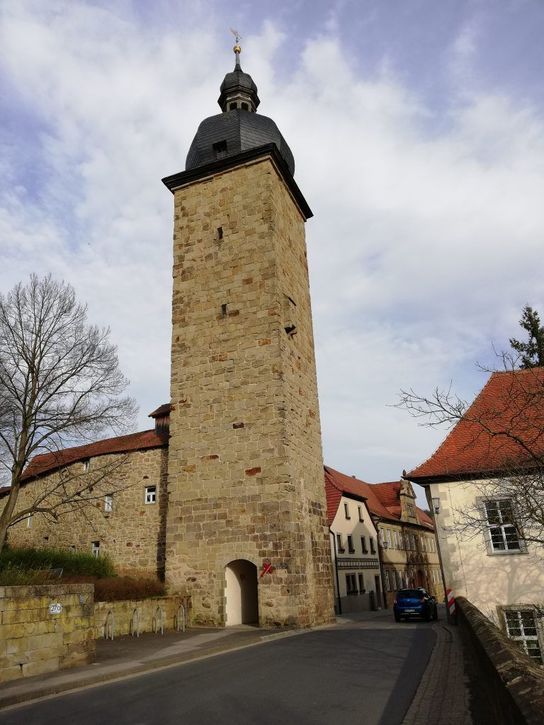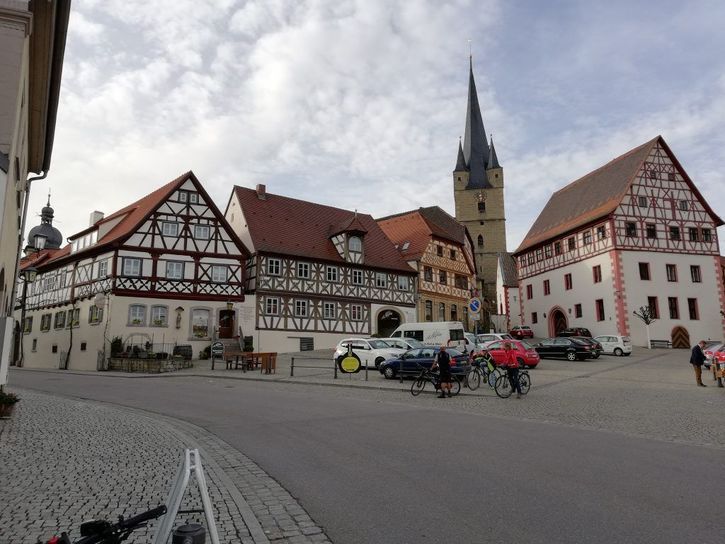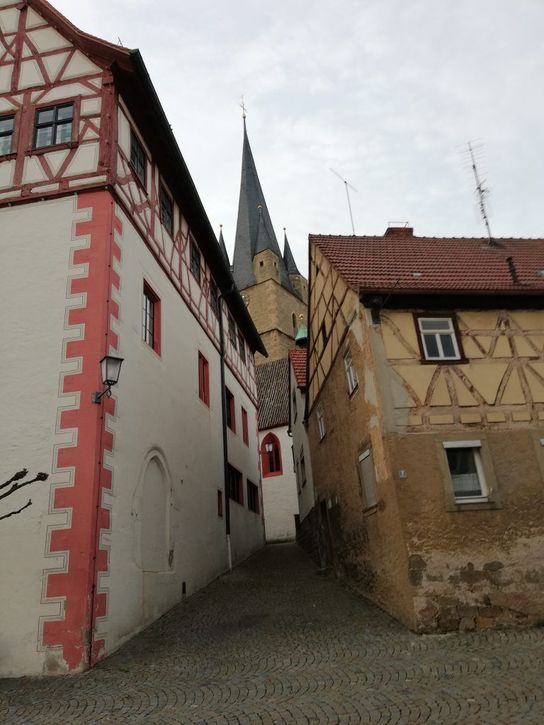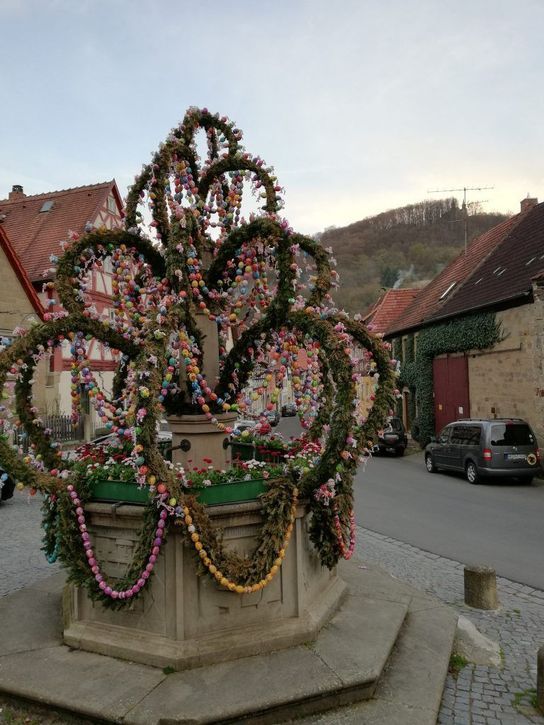Long drive to Zeil-am-Main. We went to Bamberg last year where the horrendous witch-crazes took place in 1616-1619 (300 victims) and 1625-1631 (at least 900 and possibly 1,200). We saw the sight of the Malefiz Haus where they were tortured into making confessions, and the Langegasse street down which they were transported in haycarts to the Schwarzkreuz execution ground (now the Schoenelineplatz).
Bamberg and Zeil are towns where successive generations of the same families have lived since medieval times. I suspect that Bamberg doesn’t want to publicise its gory past because the descendants of the inquisitors and executioners (as well as those of the victims) still live there, but also because it is now a major tourist centre for its splendid rausch beer. Actually more executions took place in Zeil after the available wood began to run out in Bamberg. The Prince-Bishop, Johann-Georg Fuchs von Dornheim, resolved the problem by building a witch furnace on the bank of the River Main. It was a two-storey dome with the victims standing shoulder to shoulder in the second storey while the timber was piled into the first. Large numbers of people (including entire families) could be incinerated with a minimal use of wood.
One of the worst obscenities of the craze was that very rich victims could purchase a “Bamberg Note of Grace” which entitled them to be beheaded before being burned, but they were unable to escape the initial procedure where their breasts were torn off with red-hot tongs to show that they were demons rather than humans.
Some folks think its a bit weird to take a morbid interest in an aspect of history which most people would prefer to ignore. Sadly there are religious fundamentalists (including a nutter who writes on Hebrides News every few days) who believe every word in the Bible including Exodus 18:22 “Thou shalt not suffer a witch to live” and the suggestion some place else that witches should be extirpated with fire. The furnace was last used in 1631 for the execution of Eva Maria Bachin (an ancestor of Johann Sebastian Bach?) before the Swedes overran Zeil and Bamberg and the Prince Bishop fled with 12 hay carts full of gold and silver, valuable tapestries and paintings to Austria.
Its astonishing that a town with such a history can look so stunningly idyllic. The centre looks unchanged since the 1620’s:



